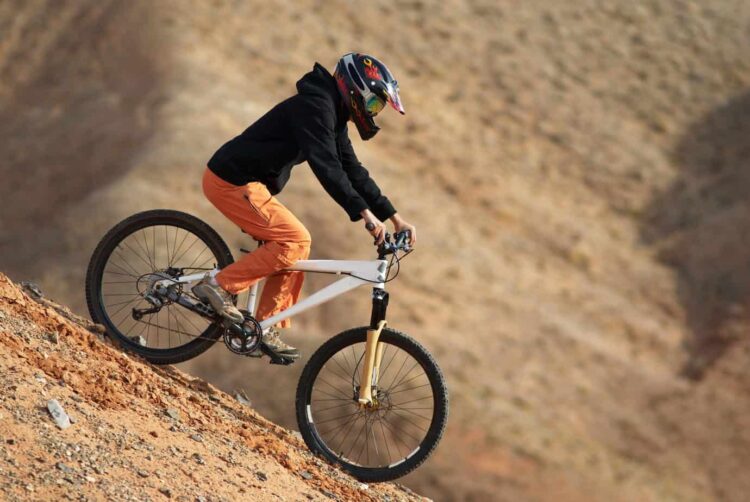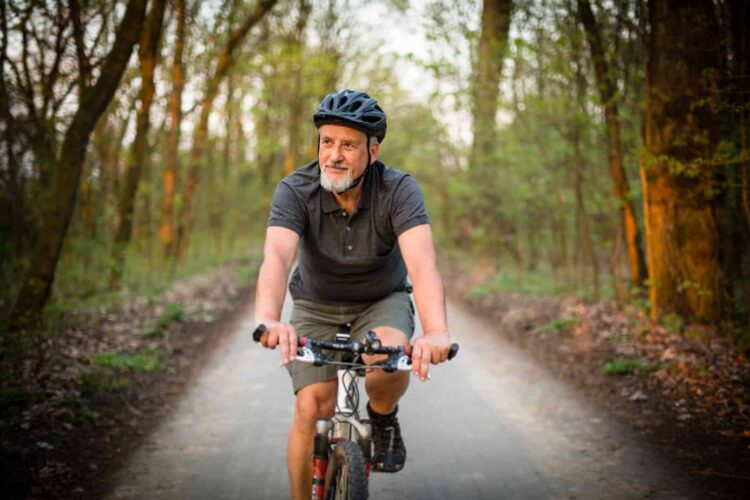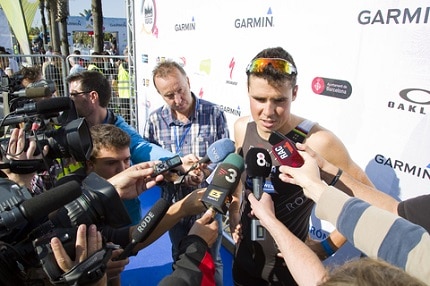Trail racing, triathlons, fun runs, marathons, and team obstacle racing are only some of the most common races that runners participate in these days.
Among the different types of races, cross country running is one of the most intense, but is cross country a sport?
This question is common since there are many cross country running events and competitions, but only a few were televised.
Let’s dig deeper into cross country running as a part of the sports scene and some tips that you can follow if you want to participate in local and regional events.
Is Cross Country a Sport?
Cross country running is a type of long-distance running sport where teams or individuals will run on open-air courses.
Aptly named, the runners won’t be running on paths or roads; instead, they have to traverse natural terrains like dirt or grass, which would add up to the difficulty of this sport.
In 1912, 1920, and 1924 Summer Olympics, cross country running was categorized as individual and team events.
During the 1924 cross country running event in Paris, 15 out of the 38 competitors reached the finished line, eight were brought away on stretchers, and two were reported dead because of the heatwave.
This tragic event stunned the spectators, and the Olympics officials decided to ban this sport from future games.
However, this issue did not stop runners from participating and hosting cross country running events since it is a way for them to test their endurance, improve their stamina, and stay fit.
Tips and Tricks for Cross Country Running
In cross country running, you need to know when to run fast and when to slow down to catch your breath.
Since this is a long-distance running competition, you won’t finish the race in just a few minutes.
If you want to be ahead of other runners, here are a few simple tips that you can follow:

1. Wear the Right Pair of Shoes
For cross country running, your running shoes will play a vital part in winning the game.
You will run on different surfaces, so grip is the most important feature.
It is also best to invest in good quality shoes that would provide the comfort and protection that you need while running off-road.
Look for specialist cross country spikes since they offer better traction.
You should look for metal spikes with 9mm, 12mm, and 15mm lengths and use them based on the terrain.
For firm and grassy courses, 9mm spikes would work best, while 15mm spikes are better for muddy courses.
2. Check the Course
You should check the competition site before the running event and review the course.
Cross country courses have laps, so you do not have to spend a lot of time walking around the course.
It would help if you familiarized yourself with the different aspects of the course, like the condition of the terrain and steep slopes.
This way, you can strategize and pick the best running shoe for the terrain.

3. Go for a Fast Start
Compared to other long-distance running competitions, the landscape of cross country running would change constantly.
If you reviewed the course before the competition, you would know the importance of a fast start to gain a more favorable position.
There are times when the courses will start to narrow, and being at the front would give you an edge since you won’t have to fight the other runners for a position.
On that note, running fast at the beginning may lead to struggles in the last phases of the race, so you need to prepare your body for the initial burst.
During training, you should include about two to three 300m to 400m dashes at the beginning.
Doing this would make the remainder of your workout extremely exhausting.
Still, it would allow your body to adapt to this type of training, and the results would be noticeable when you participate in a cross country running event.
4. Replicate the Course and Practice
If you take this sport seriously, the best way to get a shot at winning the first place is to replicate the course and practice regularly.
You don’t need to replicate everything. You just have to remember all of the hardest parts of the course and try your best to practice it every day until you find the right technique to pass it.
You should also research the weather forecast since it would greatly affect the terrain.
The solid grounds in the course might become wet and muddy if the weather suddenly became rainy.

5. Use Gaffer Tape
One of the most common problems encountered by cross country runners is losing a shoe when running on muddy grounds.
You can use gaffer tape and wrap it around your spikes after tying the laces.
It would help reduce the chances of your shoes being removed while running, especially on muddy grounds.
6. Proper Warm-Up
You should avoid warming up on the challenging part of the terrain since it may cause fatigue even before the race.
You should do some warm-ups on the roads or tarmac paths.
7. Always Be Prepared
Always bring spare clothing with you and different types of shoes that you can use depending on the weather.
That is to make sure you have the right pair of running shoes for any situation if a sudden change in weather happens.
Cross country running is more rigorous than other long-distance running sports, so the incidence of injuries and dehydration are very high.
Bring food and drinks and always have a medical kit ready.
Although the event organizers have medical professionals who are always ready to respond, you can treat small cuts and bruises after the race.
Cross Country as a Sport
Is cross country a sport, and is it as dangerous as they say?
Cross country running is definitely a type of sport, and it is only dangerous if you are not prepared.
As long as you know what you are going to deal with and have the right gear and running shoes for protection, you are in good hands.
You are not trying to break any records here, and the goal is to be the first person to reach the finish line, so prepare your gears, do your research, and train hard.














I think cross country is a sport because when it boils down to it, it involves athletics, and from your article, I can glean that it is a big event; however, I’d like to know the difference between cross country and marathon. The myriad of information in your article was really illuminating and eye-opening, and I really enjoyed reading it.
Hello, Beesean, and thank you.
Thank you for your kind words.
Great to hear about your benefit of the article too.
The main difference between cross country and marathon is;
a) The distance. You are running more than 42 kilometers in a marathon, much longer than in the cross country.
B) In a marathon, you are running on-road and on very few hills.
Don’t hesitate to contact me if I can help you with anything else or if you have any questions.
Though it may sound weird a bit, I actually am among the dew in the world who really loves cross country, and I do make out time to watch it on TV or sometimes, go out to see the event myself. Surely cross-country running us a sport too, and it is also stiffly contested. Surely a very good one here. Thanks
Hello, DarmiMaddie, and thank you.
Thank you for your kind words.
Don’t hesitate to contact me if I can help you with anything else or if you have any questions.
Totally agree. Cross country is definitely a sport, alright. I’ve joined one before way back in school where we ran through a ready track from school to school which lasted early morning and finished late finished and boy let me tell you if that long-term running does not make me sweat like crazy, I don’t know what the definition of sport is anymore aha ha
Hello, Riaz Shah, and thank you.
Thank you for your kind words.
Don’t hesitate to contact me if I can help you with anything else or if you have any questions.